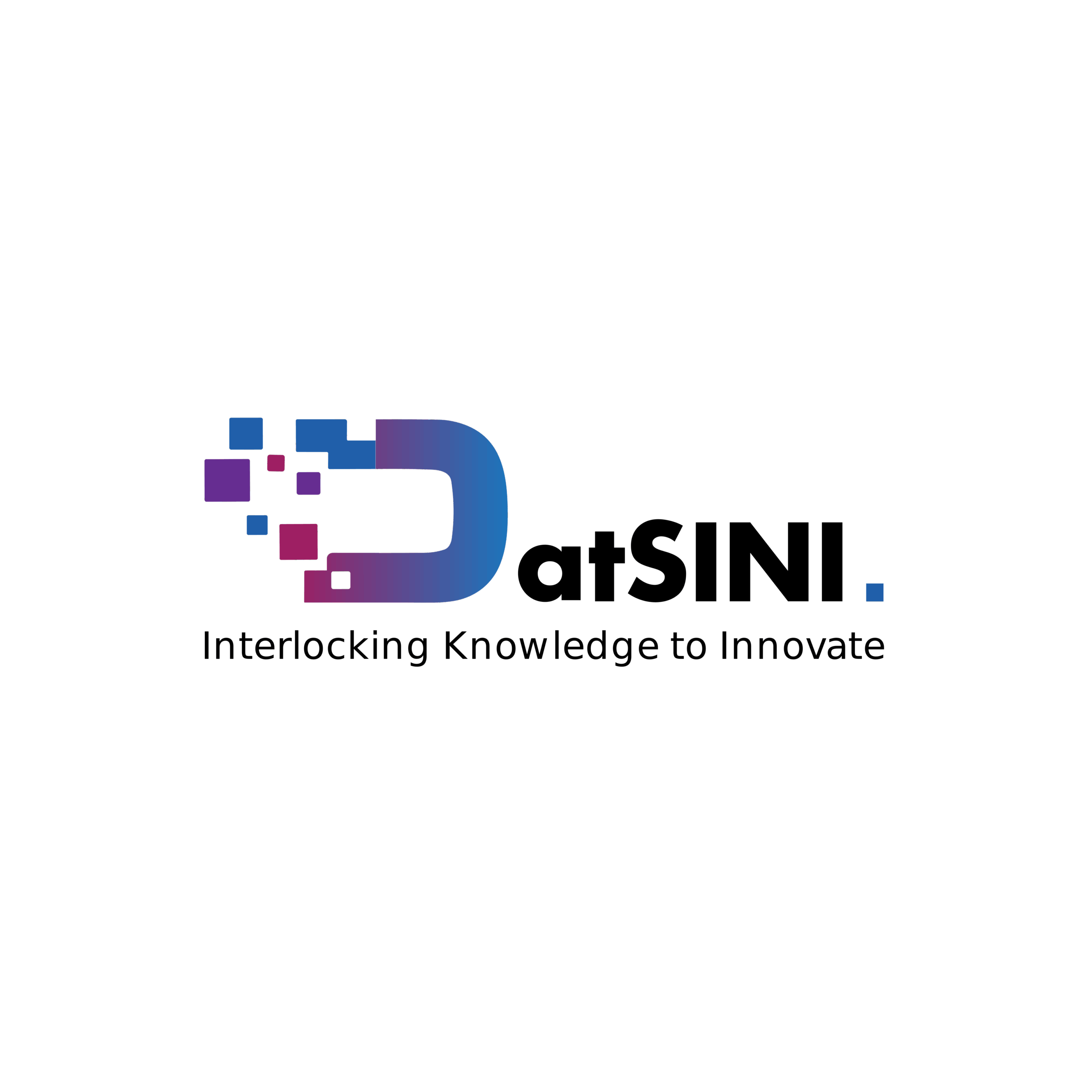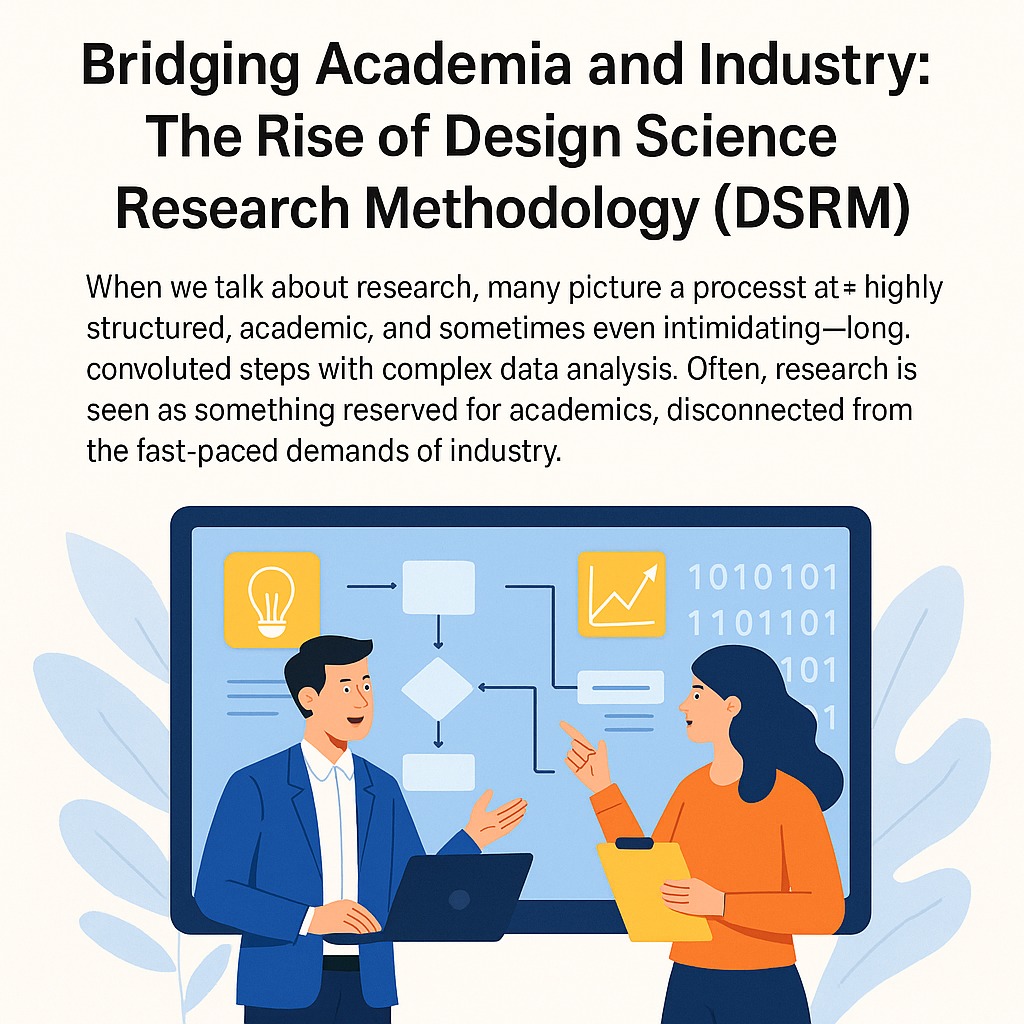Bridging Academia and Industry
When I first heard the word research, I honestly thought of something dry: dense books, academic papers full of jargon, and theories that felt worlds away from the kind of work I deal with every day. As someone from the industry, research seemed like something that belonged in universities, not boardrooms.
But that perception changed when I came across Design Science Research Methodology (DSRM). It was the first time I saw a research approach that didn’t just make sense on paper, but actually offered a practical way to address real problems in the workplace.
Research That Starts with Real Problems
Unlike traditional research approaches, DSRM doesn’t begin with abstract theories or purely academic questions. Instead, it starts with something more concrete: a real issue happening in the field, inside an organization, or in the daily workflow of professionals.
This issue becomes the foundation of the research. Rather than merely observing or documenting it, DSRM encourages researchers to create a solution. This solution, referred to as an artifact, can take many forms- it could be a conceptual framework, a digital tool, a structured method, or even a streamlined system. What matters is that it’s tangible and directly addresses the problem that sparked the research in the first place.
The Six Phases of DSRM
Design Science Research Methodology, as proposed by Peffers et al. (2007), is built around a six-phase process:
- Problem Identification & Motivation
Define a real-world problem and justify why it matters and needs to be solved. - Define Objectives for the Solution
Establish what the artifact is expected to achieve. In other words, define what success looks like. - Design & Development
Create the artifact based on the objectives and insights gathered. - Demonstration
Apply the artifact in a relevant context- this could be through a simulation, a prototype, or a case scenario. - Evaluation
Assess the artifact’s effectiveness using criteria set earlier. This step validates whether the artifact meets its intended goals. - Communication
Share the research process and the artifact’s design, application, and evaluation through appropriate platforms i.e academic publications, industrial reports, or presentations.
By following these steps, DSRM ensures the research stays methodologically sound while delivering practical, implementable outcomes.
Why DSRM Appeals to Industry Professionals
From my experience, DSRM offers exactly what many working professionals are looking for in research- it’s structured, but also deeply relevant to their job. It allows them to take real challenges they face daily and turn them into research-worthy topics that lead to workable solutions.
For individuals pursuing postgraduate studies while working full-time, this approach is ideal. They can align their research efforts with what their organization needs. This not only makes the research process more meaningful but also results in an output that their company can use. It’s a win-win: academic rigour is maintained, and real-world impact is delivered.
For employers, this approach is especially valuable. Instead of a theoretical thesis that’s filed away and forgotten, they get something functional - tailored to their operations, rooted in their business environment, and ready to be applied or further developed.
The Role of Artifacts in DSRM
A central feature of DSRM is the artifact. Unlike traditional research outputs that may be limited to models or theories, an artifact is a real deliverable, something that can be implemented, tested, improved, and scaled.
These artifacts can vary widely depending on the problem being addressed. For instance, an artifact might be a decision-making model that streamlines internal processes, a prototype dashboard that improves visibility for managers, or a structured framework to optimize reporting and monitoring functions. Even a smart data governance tool designed for specific operational contexts would count.
These are not just academic exercises- they’re functional outputs with potential for real adoption. In fact, several widely used tools today, such as the Business Model Canvas, have roots in design-oriented research like DSRM.
A Perfect Fit for the PhDpreneur Mindset
This potential for real-world impact is exactly why Malaysia's PhDpreneur Programme, introduced in 2022, aligns so perfectly with DSRM. This national effort encourages doctoral candidates to transform their research into practical or commercial solutions.
Because DSRM focuses on creating high-value, purpose-driven artifacts, it naturally pushes researchers to think beyond publication. They're encouraged to consider how their work can create measurable improvements - either operationally within an organization or commercially through marketable innovation.
Rather than producing knowledge that lives in an academic vacuum, DSRM encourages contributions that live in the real world. This makes it easier for researchers to position themselves as innovators, not just scholars.
Aligning Academia and Industry
Perhaps the most powerful aspect of DSRM is how it brings academia and industry closer together. Researchers benefit from methodological clarity and academic structure. Industry players, on the other hand, benefit from problem-solving outputs that can be adopted almost immediately.
This dual alignment means research is no longer conducted in isolation. Instead, it becomes a collaborative effort to tackle issues that matter, whether in operations, service delivery, data management, or strategic planning.
When research is designed with this kind of purpose, everyone wins.
Final Thoughts
For me, DSRM changed the way I looked at research. It wasn’t just a tool to complete a degree—it became a means to create something of actual value. The process taught me how to ask the right questions, how to design solutions methodically, and how to ensure that my work doesn’t just sit on a shelf—but gets used.
So if you're a professional considering further studies, or a researcher who wants to see your work make an impact beyond academic journals, DSRM might be what you're looking for. It gives you the tools to bridge theory and practice, and to create research that matters.
It's not just a methodology. It's a mindset shift—one that says: “Don't just study the problem. Design the solution and share the insights so others can build upon them.”

Ahadi Haji Mohd Nasir
Phd Student,
Institute of Visual Informatics (IVI), UKM

